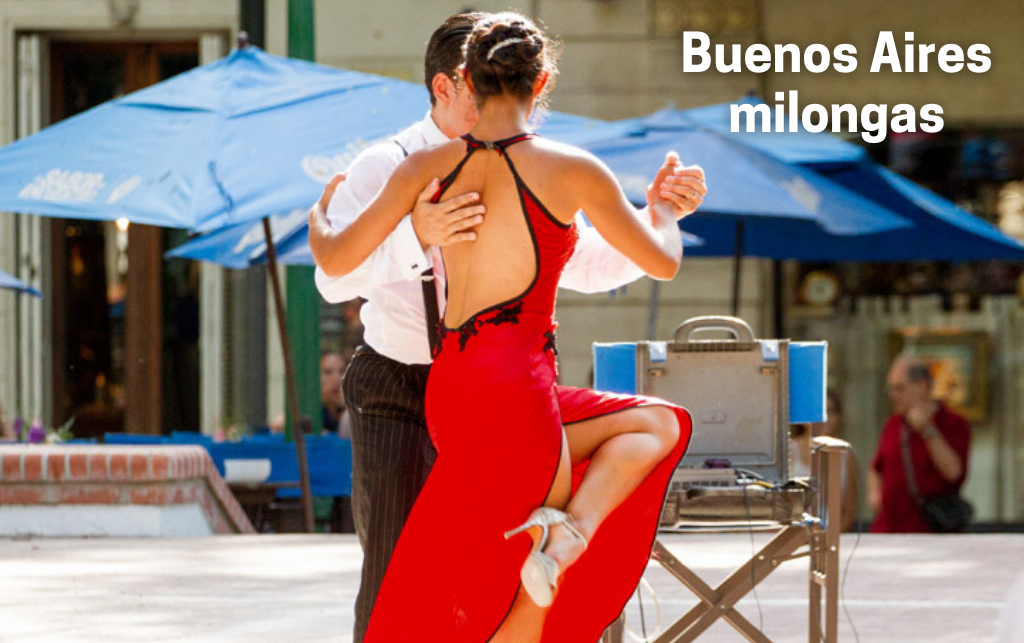Tango is a Buenos Aires staple, and has been for the last one hundred years. Learning to dance it, learning to love it, and taking lessons to get better should be a part of your trip to Argentina–if it isn’t already. Tango is for everyone, which is why we’ve written a blog on everything about tango: its history, how to take lessons and where, and what a milonga is really about!
Written by Carla Chinski, Content Marketing Manager for Vamos Academy
Tango: What It Is, What It’s Like
What Exactly Is Tango?
The definite Argentine star of the show, tango is a dance that embodies the essence of Buenos Aires. It is slow, sexy, and much harder than it looks. It is widely regarded as one of those “must-do” events for people visiting Buenos Aires; there are a wide range of places to watch it and try it out.
Tango seems to be a lot like jazz music: people either love it or hate it. It requires a lot of patience and precision. As improvisational as a dance can be, you are still bound to your partner with limitations. Getting to the level of complete free will and still making your partner looks brilliant, it takes years and years of practice.
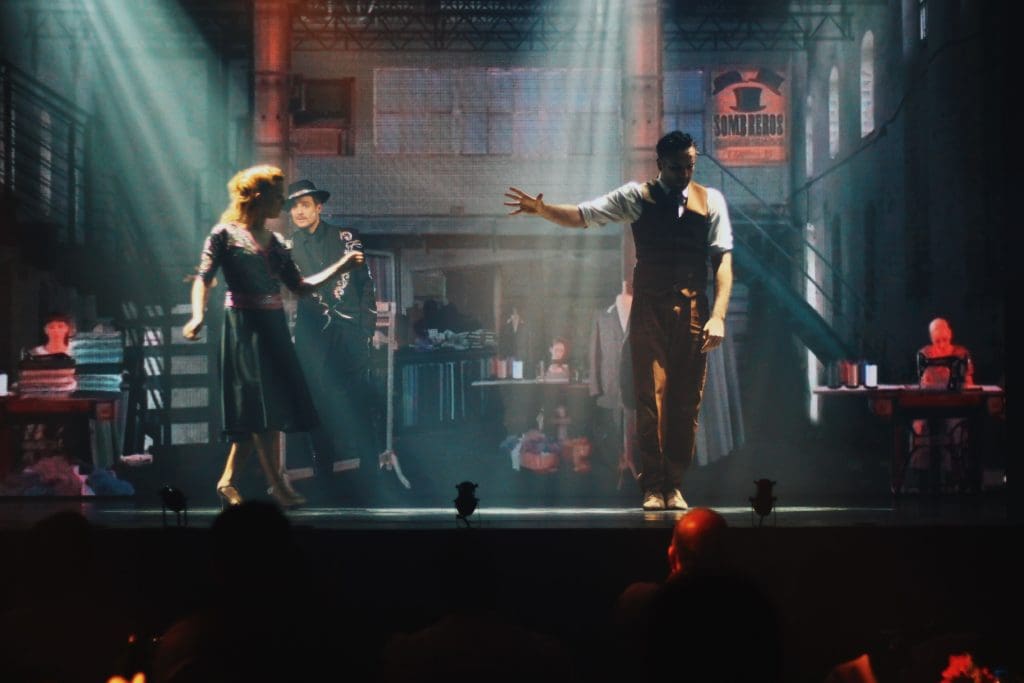

This dance is all about confidence. The leading partner must control everything and move with bold and calculated exactitude. Any sign of hesitation will be noticeable, and can very easily throw off the rhythm and your dancing partner. Once you become a more advanced dancer, you’ll learn to mix-and-match the moves, leaving a lot of room for improvisation.
The person in charge will use their hands and chest to direct their partner through the moves. There is a great amount of balance involved, so when the dance moves started requiring crossed legs and dynamic foot movements, it can get tricky, like tight-rope walking. Either way, it is definitely worth checking out during your time in Buenos Aires.
A Bit of Tango History
Tango is originally a working-class dance from the Río de la Plata around the twentieth century. It is said that tango has african-american roots, and that the dance is pretty associated to other folkloric dances like the milonga and the candombe. The dance was accompanied by instruments like piano and guitar.
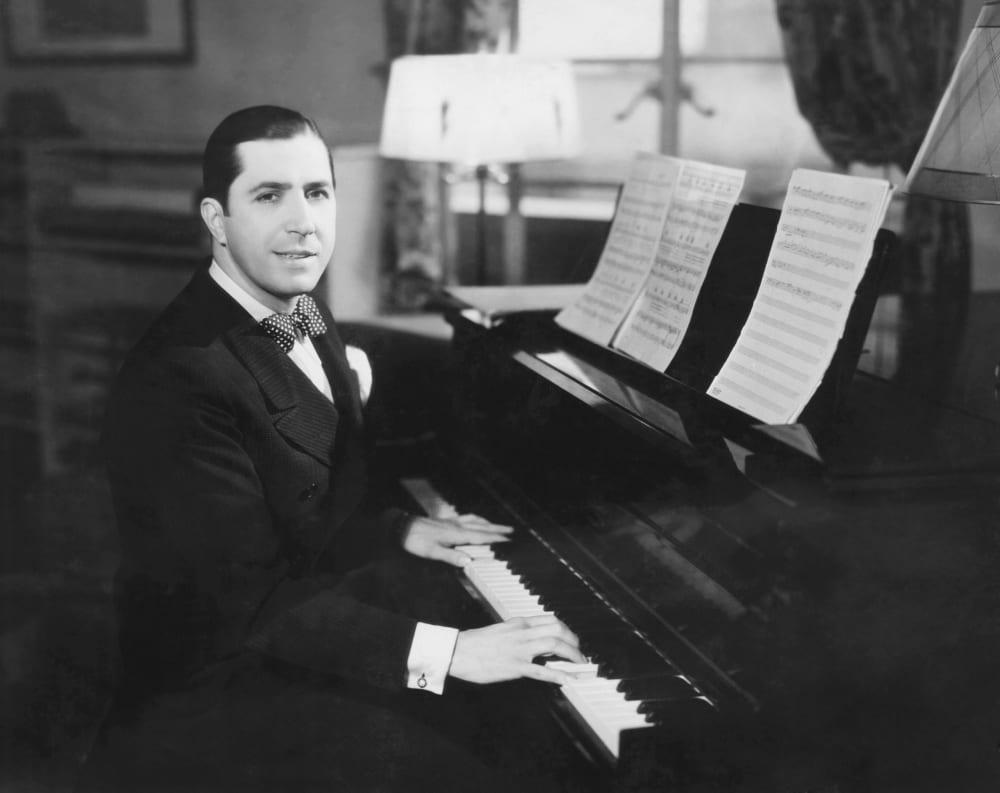

Song lyrics began to be crafted in lunfardo (the slang of the lower-middle class, convicts and immigrants), and so the poetry became increasingly important. The poetry of tango tends to be sultry, nostalgic and very sentimental. Songs like “Mi Buenos Aires Querido” and “Por Una Cabeza” are romantically-themed songs, and in time they’ve become world-famous.
The tango golden age started–and ended–during the thirties and forties. “Golden age” composers such as Pugliese and Goyeneche have impacted the scene for good. Tango soon became for export: it spread across Europe (and, specifically, Paris); Carlos Gardel surely sounds familiar because of his starring roles in film and his international fame.
Nowadays, tango has expanded well beyond its national origins and into different cultures like to become a part of Asian customs, for instance. Other influential composers include Astor Piazolla. The style of his pieces are easily identifiable for their integration of jazz instrumentation and improvisation. Even if tango remains an international dance, it’s still a big part of Buenos Aires’ culture.
Getting Into the Scene: An Introduction to Milongas
There are many milongas in the city of Buenos Aires. But what exactly is a Milonga? Well, a milonga describes the scene and place where people dance tango and practice the dance, be it with others or individually. There are many options for milongas in all the districs; the milongas form what’s called a “circuito milonguero” (milonga circle). All these terms can sound confusing; and besides, communication when dancing tango is key, even if bodily communication might seem good enough. We should note that milongas in Buenos Aires, just like the city night-life in general, take place at night and can go on until dawn.
The meaning of a “milonga” refers to both the event (to go to a milonga) and the dance itself (to dance a milonga). Milonga music stems from the payada, which is a genre of music belonging to gaucho culture, featuring a musical counterpoint and elements from the habanera.
A milonga can take place in a bar, neighborhood club or salon, so each one will have a different feel. But what they all have in common is that they’re spaces for learning: whether you’re a beginning, intermediate or well-seasoned dancer, there’s a place for you in the milonga scene. And although tango may seem like a coupled ordeal, there’s a group component to practicing this dance. It’s nice to learn with and from others, although you can also get individual tango lessons.
As such, milongas are semi-formal and traditional events, meaning that certain attire is expected, and there are social norms regarding how to behave in the tango community (this doesn’t mean you can’t be yourself, though.) It’s best to approach a milonga with no previous expectations and loosen up!
Dancing Tango During the COVID-19 Pandemic in Buenos Aires
Nowadays, in COVID-19 times, people interested in dancing tango (especially tourists!) are expected to dance with a roommate or already established partner to ensure sanitary safety. Some of these rules have been enforced and implemented by the city Government according to existing rules and regulations.
You should check out times and slots available for tango and milongas; there are reduced quotas for dancing to ensure proper social distancing and air circulation. According to government regulations for 2021, “Each shift will last up to two hours, with 30 minutes breaks between each one to sanitize and air out the premises.”
Plus, in order to take part in a milonga, you need a pase sanitario (sanitary pass), which you can get from an Android or iOs app store, called “CUIDAR”. There, you only have to input whatever symptoms you currently have (or don’t have), and you’ll get a 24-hour pass to take part in group activities. As of late, because infection numbers have decreased plenty, there is no “aforo” (limited capacity) being enforced, so there’s a possibility that opening hours and quotas will be more extended in the future.
Another way of dancing that’s growing more and more popular are the “milongas al aire libre” (street tango dancing), because, of course, outdoor activities are safer than events that take place inside. Check out this video to see how it works:
Futhermore, because tango is a physical activity, people are required to practice social distancing at all times–remember: social distancing means keeping a 1.5 meter distance between each couple. You will probably see marks on the floor to help you keep proper distance with others.
Milongas For Beginners
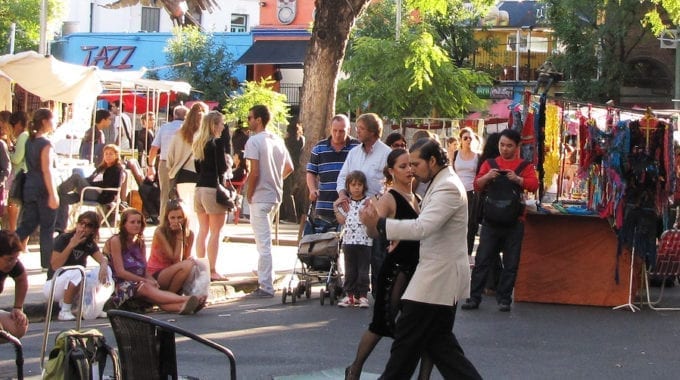

So, to get acclimated and accustomed to the tango scene in Buenos Aires, you should know there are different types of spaces to suit your needs: there are those milongas that are known as “prácticas” (practice spaces) for tango beginners. In these prácticas you can be sure you won’t be judged for making mistakes while dancing, and you can take your time to learn by practice. This is adviseable for people with little to no experience.
Another tip is to go to milongas in the afternoon–to whichever space you’re interested in specifically–and ask the teacher that’s available at the moment when he or she can give you lessons, how much they cost and if they work with beginning tango dancers. If you like the teacher, you can search for them on social media; if you don’t have a specific person in mind, just try out one lesson to see what it’s like! You can always switch teachers or partners (giving previous notice, of course.)
It’s a normal part of the learning process to also learn how to be patient with yourself: don’t expect to be a professional dancer in a couple of weeks. It’s also a good idea to plan ahead and think to what extent you want to plan your trip around tango dancing in the city.
Being In the Know: Argentina’s Milonga Magazines
Unfortunately, due to the pandemic, many tango venues in Buenos Aires have shut down permanently. However, the best way to find out about what’s going in in tango in the city of Buenos Aires and Argentina is to check out milonga magazines, that is, specific publications aimed at tango enthusiasts.
It’s also a fact that lots of milonga magazines that used to be a staple for the tango community are now shut down, or no longer exist–this is true of a well known magazine, like DNI tango. But worry not: we still have two options for you. We recommend using a magazine to check out daily options for tango events, as well as for internationally-known events and venues; even info to contact a teacher you’re interested in.
- Sciammarella Tango: Sciammarella Magazine provides up-to-date information on the best tango events in Buenos Aires and Argentina in general (show times, maps and information on how to get tickets to each venue.) Sciammarella also provides readers with other types of updates; it’s not only about events, but about the culture in general: from new records and other news, to a guide to tango orchestras and even a souvenir shop.
Website: https://sciammarellatango.com/
- Revista El Abasto: Revista El Abasto, quite like Sciammarella, also provides updated information for all-things-tango. A guide to the Abasto neighborhood–the area which gathers many milongas in Buenos Aires–is also available. The mag isn’t tango-specific. However, their tango-related section is pretty comprehensive and can perfectly do as a guide for tourists.
Website: https://www.revistaelabasto.com.ar/secciones/tango/
Best Open Tango Events In Buenos Aires
- La ciudad al aire libre: It seems that there is always a festival of some sort occurring in Buenos Aires. Currently the city government is sponsoring the summer festival La Ciudad Al Aire Libre – Cultura para Respirar. Throughout January and February there are over 100 free activities, concerts and shows presented throughout Buenos Aires. It is the perfect way to enjoy summer in the city.
- Tango World Championship: Not only the competition is free to enter, most of the festival activities are also free and open to the general public . The festival has a jam-packed schedule of free tango classes for all levels, free exhibitions, concerts and tango performances. It is really an amazing way to promote and celebrate this national dance, as tango has been declared world heritage by UNESCO. As you get into the last leg of the festival, definitely go over to the Main Hall of the festival and enjoy all the free activities and get to know about this rich history and culture of Argentina!
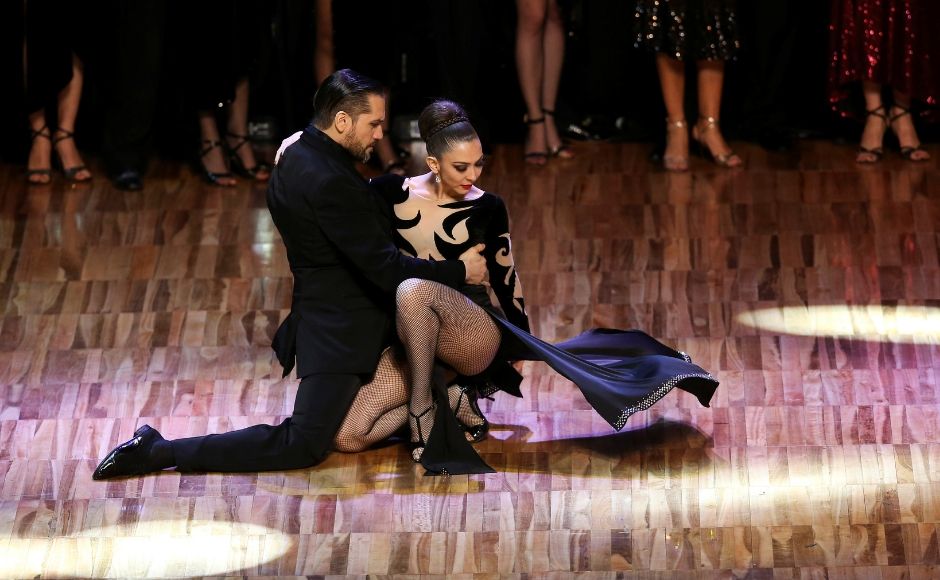

- La gran milonga nacional: La Gran Milonga Nacional is a celebration of our beloved Tango culture, which is held every year taking over a good stretch of Avenida de Mayo with live orchestras and outdoor milongas. They also set up huge speakers behind the chairs pointing outwards to a huge empty space, and that was where the best activities take place:the milonga al aire libre (the outdoor or open air tango dancing)!
NOTE: Due to the pandemic, the Gran Milonga was last held in 2019, but it’s estimated that it’ll come back soon to Buenos Aires, so keep posted.
Some Basic Tango Steps: Dance Like a Pro
The walk: What can the tango walk teach us? First, in the same way that we need to know how to walk with grace and balance before dancing, we need to know how to be ourselves before we can be in a relationship. There isn’t anyone on this earth that can teach us how to be ourselves, because we aren’t all the same. We need to define our individuality before we can be with another person. It’s the same way that being single for a period of time can be a good thing. In that time we can cultivate our garden so that we can offer something to our partner.
The stance: What’s surprising about the tango stance is how much freedom is given with this step. In the stance, the couple is connected chest-to-chest. But at the level of the hips, each partner has plenty of space to do what they want.
The change of pace: There are some movements of tango that involve a couple breaking away from each other in order to change pace. These movements coincide in beautifully with the music.
La sacada: The sacada is my favorite part. The man blocks the foot of the woman, and she needs to overcome that with grace.
Los molinetes: Finally, there is the molinetes – when the woman turns around the man. The woman needs, during the molinete, to maintain the connection of her chest with the man’s chest to appear graceful. It’s a difficult movement and it’s easy to lose this connection between man and woman.
Milongas for Seasoned or Intermediate Dancers
If you’re an experienced dancer, you might want to skip the regular learning process and go straight to the nitty-gritty. It’s true that most more or less established milongas impart lessons for advanced, intermediate and beginner students. But it’s more likely that in a popular milonga club you’ll get access to specific, world-renowed teachers.
It’s also likely that you know your stuff, so don’t be afraid–as we’ve already said–to contact a specific teacher and find out where he or she works, to ask for private, individual lessons. We’ve included clubs that are open specifically for tango lessons. Others, however, are cultural centers in Buenos Aires, such as the Centro Cultural Borges.
Best Milongas in Buenos Aires: Get Into the Scene
- El Beso Milonga Club: At El Beso you’ll find traditional tango lessons. The also traditional “mesa de los milongueros” gathered some of the best dancers in the country. El Beso’s main feature is that there are milongas going on all year and every single day–yes, you read that right. Although there are lessons every day as well, and on different time frames, we recommend the Academia de tango (Tango Academy) for dancers who know their way around a milonga.
Address: Riobamba 416
Contact: 5833-2338 | www.elbeso.com.ar/
- Los Laureles Tango Bar: Los Laureles Bar is a historical tanguería and bar notable (bar of historical importance, as declared by the City of Buenos Aires). The website states: “One of the few constructions that have survived since the 19th century in Barracas, today it houses one of the best typical Buenos Aires restaurants and cuisine. You can eat great food and dance tango from Thursday to Saturday. Those who come to Los Laureles are amazed when they get to know ‘true tango'”
Address: Avenida General Iriarte 2290
Contact: 4303-3393 | https://www.barloslaureles.com.ar/
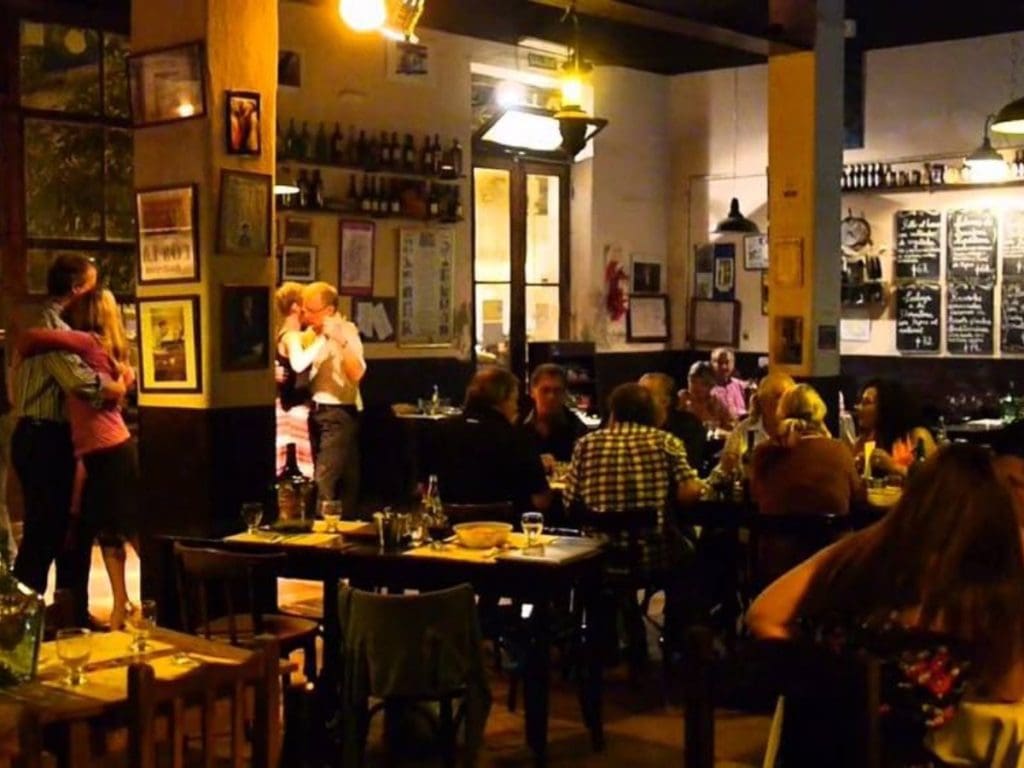

- Salón Canning (Parakultural Milonga): Now located in Scalabrini Ortiz, the Parakultural is a classic underground salon in Buenos Aires. The milongas and lessons started in the nineties and continue on to this day. Most importantly, the milonga at Parakultural has hosted some of the best milonga dancers, and it still does! Professional musicians also come play here for an immersive experience. There are currently lessons being held on Mondays, Tuesdays and Fridays, so check out the website for a list of the different times and teachers.
Address: Avenida Raúl Scalabrini Ortiz 1331
Contact: 4833-3224 | http://www.parakultural.com.ar/
- La Viruta Tango Club: La Viruta Tango is not expensive at all, but remember: sometimes, cheap is actually better. La Viruta mostly offers a wide variety of tango shows and events, but they also offer tango lessons. The club also hosts competitions, and even tango seminars for more experienced dancers.
Address: Armenia 1366
Contact: 2616-1122 | https://www.facebook.com/LaVirutaTangoClub/
Find more milongas on the daily at: https://www.hoy-milonga.com/buenos-aires/es



